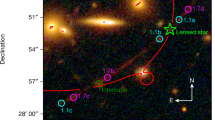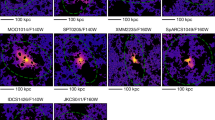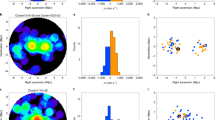Abstract
KAROJI and Nottale1 have compared galaxies situated behind or inside clusters with those whose light does not encounter any important cluster of galaxies. They suggested that either light emitted by distant galaxies is redshifted when passing through clusters of galaxies, or distant sources appear more luminous when seen through intermediate clusters of galaxies, which could act as gravitational lenses. Here we examine the magnitude of the lens effect for clusters of galaxies, and find it unlikely that the observational effect claimed by Karoji and Nottale can be explained in this way.
This is a preview of subscription content, access via your institution
Access options
Subscribe to this journal
Receive 51 print issues and online access
$199.00 per year
only $3.90 per issue
Buy this article
- Purchase on Springer Link
- Instant access to full article PDF
Prices may be subject to local taxes which are calculated during checkout
Similar content being viewed by others
References
Karoji, H., and Nottale, L., Nature, 259, 31 (1976).
Dyer, C. C., thesis, Univ. Toronto (1973).
Dyer, C. C., and Roeder, R. C., Astrophys. J., 189, 167 (1974).
King, I. R., Astrophys. J. Lett., 174, L123 (1972).
Clark, E. E., Mon. Not. R. astr. Soc., 158, 233 (1972).
Sandage, A. R., Astrophys. J., 202, 563 (1975).
Author information
Authors and Affiliations
Rights and permissions
About this article
Cite this article
DYER, C., ROEDER, R. Clusters of galaxies as gravitational lenses?. Nature 260, 764–765 (1976). https://doi.org/10.1038/260764a0
Received:
Accepted:
Published:
Issue Date:
DOI: https://doi.org/10.1038/260764a0
This article is cited by
-
Diffraction of electromagnetic waves in Schwarzschild's space-time
Astrophysics and Space Science (1980)
-
Red-shifting of light passing through clusters of galaxies: A new photon property?
Lettere Al Nuovo Cimento Series 2 (1977)
Comments
By submitting a comment you agree to abide by our Terms and Community Guidelines. If you find something abusive or that does not comply with our terms or guidelines please flag it as inappropriate.



